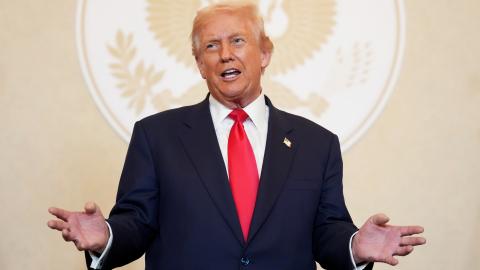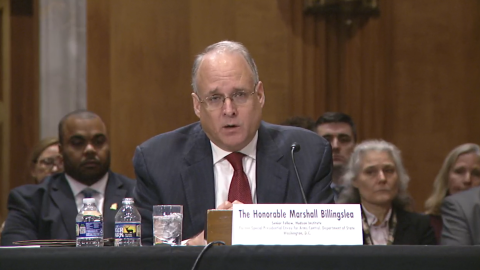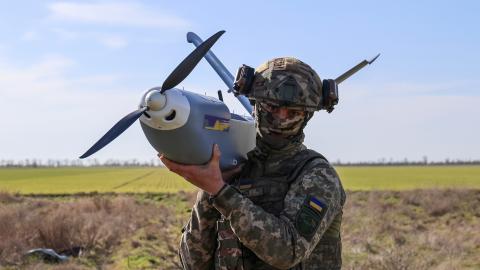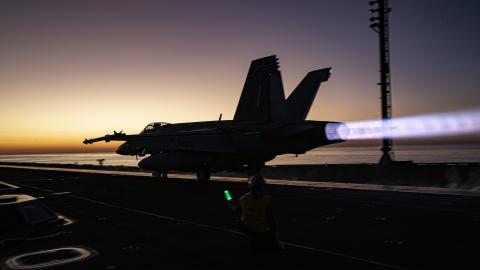Washington must regain its strategic focus. The Trump administration’s penchant for disruptive policymaking conveys ad hockery rather than deliberate strategy. Worse, strategic incoherence risks crippling the US’s ability to meet the twin geopolitical imperatives posed by an increasingly assertive and innovative China: deterring aggression and winning the race for technological dominance.
Forthcoming strategy documents may restore some clarity to US declaratory policy, but they must go further, linking concrete aims—such as securing technological primacy and preventing conflict, especially a hostile takeover of Taiwan—to realistic ways and means. Success will depend on Washington’s ability to integrate economic and security objectives into a coherent whole. Equally essential is for the Trump administration to accept that victory is impossible without trusted allies, and for those allies to commit greater resources and unite behind a shared plan of action.
Both aims fit within the longstanding strategy of preventing adversarial hegemony over Eurasia. Allowing China to dominate land and sea would threaten the US; allowing it to control AI, quantum, biotechnology and other critical technologies would be equally unacceptable. Yet this strategy leaves room for China to prosper in peace, so long as it does not achieve a decisive advantage.
The most dangerous moments will come when China believes it holds an unassailable upper hand, or the US concludes it has only one last chance to avert catastrophic decline. The first imperative, deterring conflict, demands urgent action. President Xi Jinping’s approach to Taiwan and other core interests suggests that if gradual power accumulation fails to deliver, China may seek a decisive military advantage through rapid escalation. This risk requires credible, forward-looking military investments to dissuade aggression and prevent miscalculation.
Intelligence services in Canberra, Tokyo, Washington and elsewhere acknowledge the rising risk of conflict. A Vietnamese think tank leader told me in June that Beijing may resort to force when three conditions align: the Chinese army has achieved a favourable military balance for rapid success; the US is distracted and ambivalent about defending Taiwan or the Philippines; and domestic political pressures undermine Xi’s legitimacy. All three conditions are now flashing amber.
The second imperative is winning the long-term race for technological supremacy. Xi is pursuing this as a means of fulfilling the ‘China Dream’ and ‘winning without fighting’. Economists David Autor and Gordon Hanson call it ‘China Shock 2.0’. The first shock, from the late 1970s to 2015, saw China rise from Mao-era isolation to manufacturing dominance. The second involves a concerted drive to control next-generation technologies that will underpin future economic power and military superiority, including semiconductors, AI, green energy and quantum computing.
China’s Made in China 2025 plan has sharply narrowed the technology gap with the US, aided by vast state subsidies that have reduced dependence on foreign equipment and elevated Chinese firms’ global competitiveness. Its ambitions have expanded far beyond the 10 priority industries identified in 2015.
The intensity of the competition is evident: President Donald Trump announced massive new investment in AI-driven data centres in Pennsylvania on 15 July and launched an AI action plan on 23 July, while Beijing has convened closed-door meetings to devise what it hopes will be a superior model for AI dominance. The military and technology races are not slowing each other down; they are accelerating in tandem.
Meeting these challenges requires a strategy that is clear-eyed about risks; unified in purpose; and built on military resolve, industrial resilience and allied coordination across the Indo-Pacific. The dual imperatives of deterrence and high-technology competition demand coordinated alliance action. For the US and Australia, four priorities stand out.
First, neither nation can meet these challenges alone. Robust strategic dialogue must translate into practical readiness.
Second, both must sharply increase investment, not only in defence budgets, but in critical technologies and industrial capacity such as shipbuilding, drones and precision munitions. Australia’s current defence spending falls well short of what is needed for near-term regional deterrence and long-term AUKUS goals. It must move towards a NATO-like trajectory (and so must Japan and South Korea). Washington, in turn, should focus on reciprocity and outcomes rather than just demanding inputs.
Third, joint contingency planning must be pursued with focus and realism. Such planning should enable rapid wartime cooperation, such as using Australian territory as a forward base, without binding any future government to conflict. Australia must develop a regional force posture and long-range strike capability modelled after and superior to Japan’s.
Fourth, the AUKUS review should remain open to multiple efficient pathways for winning the undersea competition while ensuring near-term capabilities arrive fast enough to reinforce deterrence. The aim must be to secure undersea superiority this decade while building platforms capable of remaining stealthy into the 2050s, without incurring prohibitive opportunity costs.
These measures will not meet every contingency, but they will help restore the strategic focus Washington and the US-Australia alliance need. The US needs to regain a focus that has been lost amid disruption and uncertainty.















